
10 minute read
Diesel to hydrogen
DIESEL OUTBOARD TO RUN ON HYDROGEN
Diesel outboard engine manufacturer Cox Marine, has joined SHAPE UK, a consortium looking to transition Portsmouth International Port into the UK’s fi rst zero-emissions maritime hub
As part of this project, Cox will be working with the University of Brighton to convert one of the company’s CXO300 diesel outboard engines to operate as a dual fuel hydrogen engine and to demonstrate the engine operating in the port environment.
The conversion and demonstration form part of the wider Shipping, Hydrogen & Port Ecosystems UK (SHAPE UK) project which aims to demonstrate an achievable modular green hydrogen generation system within Portsmouth International Port (PIP). Maritime operations are paramount to the efficient movement of goods nationally and globally but are often high contributors of CO2 emissions and air pollutants. The adoption of decentralised energy systems offers the potential to support the necessary transition of ports and their operations to carbon net-zero operations.
Tim Routsis, CEO of Cox Powertrain said: “I am delighted that Cox has been invited to participate in SHAPE UK. I see
I see the development of effective and useable hydrogen-based marine ‘‘ propulsion systems as essential if we are to drive down emissions while continuing to provide essential transportation systems. This is an area where the UK is excellently placed to develop the technologies and infrastructure which will both reduce pollutants and give birth to a vibrant new UK-based economic sector
the development of effective and useable hydrogen-based marine propulsion systems as essential if we are to drive down emissions while continuing to provide essential transportation systems. This is an area where the UK is excellently placed to develop the technologies and infrastructure which will both reduce pollutants and give birth to a vibrant new UK-based economic sector.”
James Eatwell, Head of Research and Development for Cox Powertrain and SHAPE project lead for Cox said: “The maritime sector as a whole and Cox in particular, recognise the need to make a positive contribution to the significant challenges of reducing worldwide CO2 emissions. From Cox’s perspective, Hydrogen represents a highly promising option for the reduction of marine CO2 emissions, and we are delighted to be a part of this exciting project, bringing together as it does such a comprehensive range of expertise from across industry.”
8 Cox Marine
is working with the University of Brighton to convert its CXO300 diesel outboard engine to operate as a dual fuel hydrogen engine
Emissions control specialist Eminox is showcasing its scalable, modular emissions reduction solution for high-speed diesel engines at the Europort exhibition.
Eminox’s exhaust aftertreatment system (EATS) ensures operators can meet more stringent International Maritime Organisation (IMO) emissions targets around nitrogen oxides (NOx), sulphur oxides (SOx) and particulate matter (PM), both within emission control areas (IMO III) and on inland waterways (Stage V).
The modular platform is easily adaptable to a wide range of high-speed diesel engines, bringing down development and certification costs for manufacturers and operators. By effectively integrating with the engine, it optimises emissions reduction and ensures compliance. Combined with Eminox’s in-house design and manufacturing capabilities, the platform enables rapid development of complete, end-to-end solutions for marine diesel engines and power generators.
“Meeting tightening emissions control regulations is a key challenge for the maritime industry,” said Brian Bates, Head of Technical Sales, Eminox. “Manufacturers need to ensure cost-effective compliance across their product ranges – our modular emissions control platform has been designed to easily adapt to their needs, providing a complete, high-quality solution for high-speed marine diesel.”
The EATS can be deployed for new engines and as a retrofit to existing vessels.
FERRY MODERNISATION ON TRACK
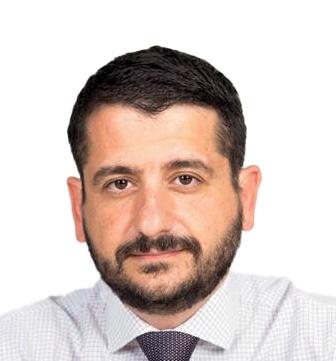
COVID-19 hasn’t slowed the ferry modernisation plans of one ambitious industry player.
Swedish ferry company Stena Line has taken delivery of its newest RoPax ferry, Stena Scandica (ex Stena Lagan). The vessel is the first of two Visentini vessels to be lengthened and modernised by Stena RoRo at Sedef Shipyard in Tuzla, Turkey.
Stena Line CEO, Niclas Mårtensson, said: “Taking delivery of the large, modern and efficient vessel Stena Scandica is a major milestone for Stena Line and enables us to continue to grow together with our customers in the Baltic Sea.”
The Stena Scandica is being lengthened with a 36m midsection. After the conversion it is 222m long, with a capacity of 970 passengers and 2,875 freight lane metres.
To increase the loading efficiency, the vessel has been modified with drive through capabilities on two levels.
The vessel has also been fitted with several sustainable features and fuel efficiency improvements, such as hybrid scrubbers, ballast water cleaning systems, twisted leading edge rudder with costa bulb.
Sister vessel Stena Baltica (ex Stena Mersey) will undergo the same modifications.
Per Westling, MD at Stena RoRo, pointed out the new capacity and efficiency measures result in a reduction of emissions for the lorries transported on the ferries and a shorter port turnaround time for a lower speed at sea.
Stena Scandica will start operating on Stena Line’s route between Nynäshamn in Sweden and Ventspils in Latvia in the beginning of July. Later this year, Stena Baltica will join Stena Scandica. With both vessels in place, the total capacity increase on the route is 30%.
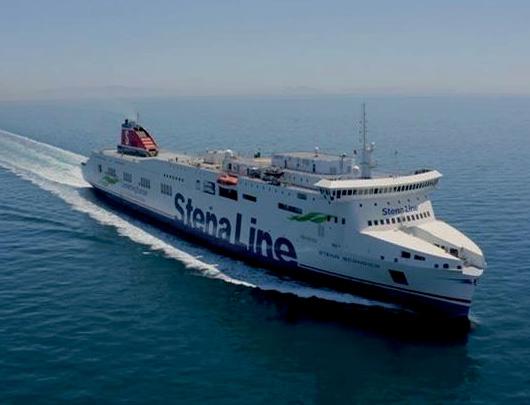
Photo: Stena Line
8 The Stena Scandica modifi cations
will enable more capacity and improved effi ciency
Greentech expansion drives Poland investment
Yara Marine’s new site in Gdansk will serve turnkey deliveries as part of the company’s green tech expansion, such as shore power and WindWings, as well as onboard repairs and upgrades.
This marks a milestone for Yara Marine Technologies as they move into installation.
Aleksander Askeland, CSO at Yara Marine Technologies said: “When introducing new and unfamiliar technologies to the maritime industry, we experience that we need to be able to supervise and cover some of the installations ourselves, if only to get local installation and commissioning teams on the right track. We often send our engineers to help on particularly difficult tasks, and now we can send our installation team as well”.
To start with, the installation team will focus on conversions, assembly, welding and repairs.
The new site will also function as a complementary addition to Yara Marine’s suppliers in the after-sales part of the business. This enables the company to further strengthen its service capabilities and add value to its long-term service agreements. The facility is located at Budowlanych no 17L, 80-298 Gdańsk.
Making OSVs greener
Off shore support vessels (OSVs) serving the off shore wind sector will become greener with a new initiative.
Columbia Group member, CSM Energy and Hydrus Engineering have joined forces to assess and retrofit OSVs involved in offshore installations and operations, turning them into hybrid ships powered by battery and fuel.
Lambros Nakos, partner at technical consultant Hydrus Engineering, said: “The current order book for new OSVs has declined since 2016, with fewer than 50 vessels ordered since the beginning of 2020. Given that OSVs already in operation will likely run for another 25 years, retrofitting them is the best option for ensuring vessels in the offshore wind farm sector are eco-friendly.”
What’s included in the deal?
Services include a feasibility assessment, pre-financing evaluation, budgeting and procurement control, engineering, retrofitting, supervision and commissioning.
The upgraded vessels will use significantly less fuel, reducing emissions and cutting maintenance costs for the diesel generators that power the ships.
Retrofitting existing vessels will be far quicker and much more cost-effective than building greener OSVs from scratch, according to a joint CSM Energy and Hydrus Engineering statement on the expected demand for greener ships in the offshore sector.
The OSV market has struggled in recent years because of the oversupply of vessels and the declining need for oil. But demand for these ships is expected to grow as investment in the offshore wind market continues to rise.
SMS Group completes dredger refit
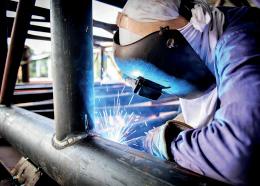
8 The SMS Group has completed a
refi t of Hanson Aggregate Marine’s 68m ‘Arco Dart’ trailing suction hopper dredger
The SMS Group has started 2021 by successfully completing a D Class dredger refi t job that included hydraulics works, electrical works and repairs.
This refit of Hanson Aggregate Marine’s 68m ‘Arco Dart’ trailing suction hopper dredger included shell plate and stiffener renewals and repairs; the manufacture and installation of new life raft frames; modifications to breather pipework; removal and renewal of dredge pipe assemblies; bi-annual hydraulics works; motor rewinds and replacements; renewal of portside mooring bollards; various machining projects; electrical works to the main switchboard; bilge cleanings; and various pipeworks.
Alistair Rockett, general manager for Bristol port-based SMS Group in Avonmouth, said: “The refit was the first of the year for us in Avonmouth, and it was a great, great success.
“Special thanks to Antonios Chatzistefanou from Hanson. He and has team ensured the refit ran very smoothly.
“Given the Covid ‘challenge’ all parties, including Antonios, the crew and the supply chain, genuinely pulled together to complete the refit on time and on budget. It was a pleasure to work for Hanson.”
Other planned and preventative maintenance took place alongside too, resulting in a comprehensive repair schedule.
Tony Body, West Coast Regional Manager for The SMS Group, said the COVID-secure work was completed by bio-fogging the vessel pre-handover.
RETROFIT SEES 24% REDUCTION IN FUEL USAGE
A retrofi t on a small passenger vessel has resulted in reduced fuel consumption of 24% and reduced emissions.
Swiss shipowner CGN retrofitted Hull Vane B.V’s Hull Vane and a bulbous bow from a local subcontractor on the 30m passenger vessel Valais. The main engines were also replaced with new common-rail V8 MAN engines. After launching of the vessel, ballast was added in the bow to bring the ship to the appropriate draught.
Irwin Gafner, technical director of CGN, said: “We are extremely pleased with the results of this retrofit. Improving the hydrodynamics of a vessel makes perfect sense, regardless of which fuel we will be using in the future. Using less fuel makes a future energy transition easier and more affordable, and in the meantime, we have the benefit of lower fuel costs, less CO2 emissions, less noise and less waves.”
ECO-BENEFITS
In spite of the significant amount of added weight, including Hull Vane, bulbous bow construction and ballast, the results showed that the fuel consumption of the vessel was reduced by 24%. Additionally, the company calculated that the retrofit will reduce CO2 emissions by 129t per year, plus reduce diesel particles and NOx emissions by 24%.
Noise measurements on board also showed that the improved efficiency, lower rpm’s and new engines made the vessel quieter: the noise level was reduced by 2 dB(A) in the wheelhouse and by 6 dB(A) in the passenger lounge.
The vessel now also makes significantly less waves, while the added weight and added submerged surfaces also improve the stability and seakeeping of the vessel.
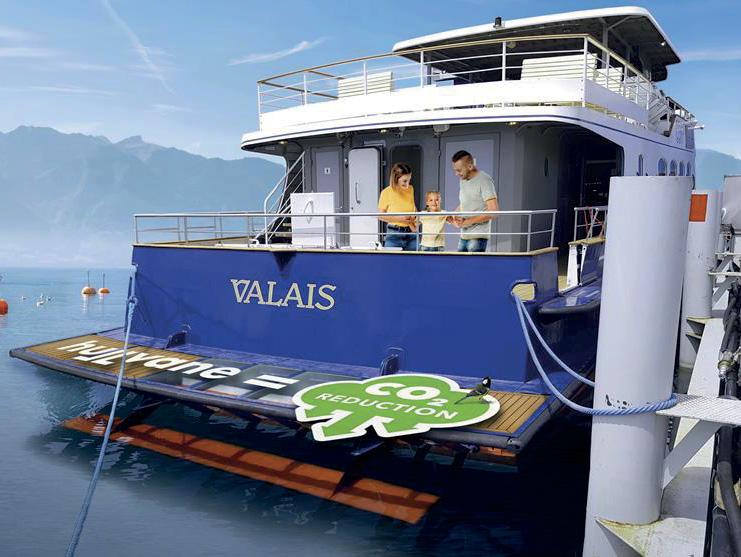
8 Hull Vane B.V’s Hull Vane and a bulbous bow were retrofi tted on the 30m passenger vessel Valais
Dutch dredging major Van Oord has signed a threeyear agreement with ABB Turbocharging to provide fl eetwide maintenance and optimization services.
The agreement comes as two Van Oord vessels receive the first turbocharger upgrades of their kind in the dredger sector, saving thousands of tons in fuel and carbon emissions over the next decade.
The service agreement, which marks more than thirty years of
Turbocharger service agreement
cooperation between Van Oord and ABB Turbocharging, will help the owner minimize lifecycle costs and improve emissions across its fleet. As well as offering full technical support and access to the latest turbocharger technologies and digital solutions, ABB Turbocharging will provide maintenance planning and budget control based on a ten-year strategic outlook.
Ron Vlasblom, General Manager Turbocharging Benelux, ABB Turbocharging said: “Turbocharger maintenance and upgrades play an important role in keeping vessels operating at optimal efficiency. Multi-year agreements give extra certainty and a long view that you cannot get when working on an ad hoc basis. This is the third such agreement we have signed with Van Oord and we are delighted to have earned their trust over our many years of working together.”
Van Oord’s largest trailing suction hopper dredging vessel was the first dredger to receive an upgrade to ABB’s TPL-A turbochargers. A similar upgrade will be performed on a second large dredger. The two upgrades are projected to save thousands of tons in fuel and carbon emissions over the next decade.
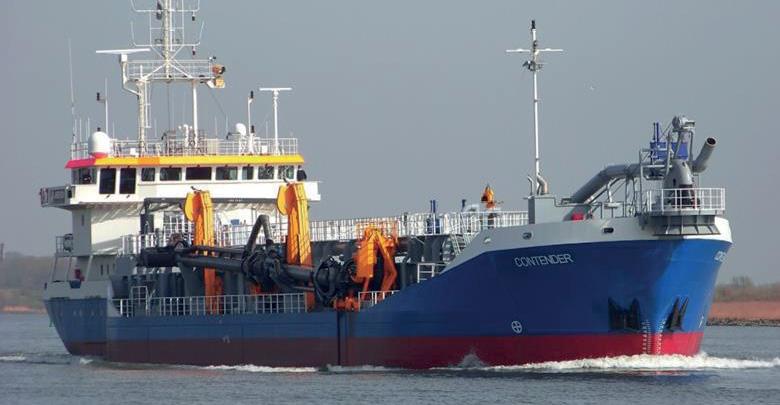
8 Van Oord trailing suction hopper




